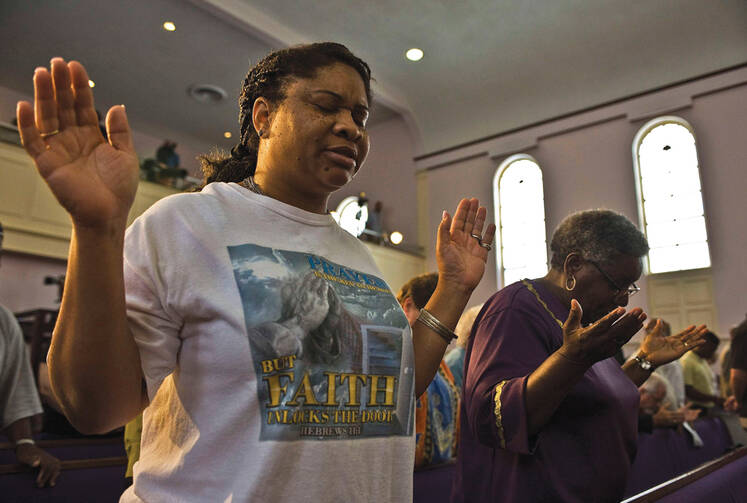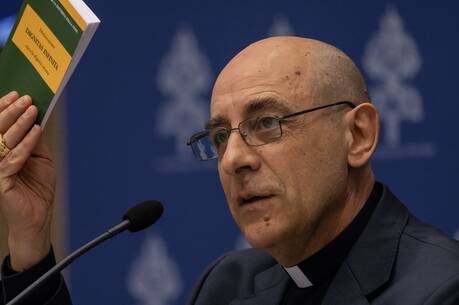During my year in the United Kingdom I kept up obsessively with news of home. It is not a habit that is encouraged among students abroad, but I expected with the sort of headlines I followed I would not be missing much. How is it possible, I then reasoned, to read about controversial or troubling events and feel anything but gratitude for distance? But I estimated wrongly. I encountered the Byron Smith case while I was overseas and followed the coverage of the trial as it unfolded. And it did generate, contrary to my expectation, a kind of homesick feeling: a longing to console someone or something very far away.
Home Invasion
On Nov. 22, 2012, Thanksgiving Day, 65-year-old Byron Smith was home alone in Little Falls, Minn. He was in the basement of his house, waiting, with bottled water and energy bars for provisions and an audio recorder that was taping the silence. He was also armed with multiple firearms. Eventually Smith heard signs of a break-in: first the shattering of glass and then footsteps on old wood flooring. He waited.
When 17-year-old Nick Brady began to descend Smith’s basement stairs, Smith fired multiple times without warning, killing him. He then sat down in the chair he had been waiting in and remained there, still, for another 10 minutes. Haile Kifer, 18, approached next.
Smith shot her but did not immediately kill her. Seeing that she had not died, he leaned over her prone body, placed the barrel of his gun under her chin and shot her. Smith waited a day to call the police. He was sentenced to life in prison on April 29, 2014, after the jury deliberated for just three hours, pursuant to a lengthy and public trial that I followed with a sense of distant mourning.
Media Frenzy
Coverage of the Smith case was immediately polarized, unsurprising in light of comparable cases in recent memory, most notably the killing of Trayvon Martin by George Zimmerman in 2012. More grim yet was the fact that the verdict against Smith was handed down—to mixed media response—just as news broke of an eerily similar case in Montana. In that case, a homeowner named Markus Kaarma allegedly baited 17-year-old Diren Dede, whom he suspected of burglary, into his garage and then killed him.
As in the wake of Martin’s killing, heavily politicized media outlets quickly competed to interpret Smith’s murders so as to deflect all the usual critiques: of gun violence, for instance, and of laws that permit lethal force in admittedly hazy cases of trespassing and self-defense. On April 30, Sean Hannity covered the case on his Fox News show.
Hannity was suitably outraged that Smith was sentenced to life in prison for his murders. “They broke into the guy’s house,” he argued, while a guest claimed Smith should “get a medal of freedom for what he did.” Both proclamations were evidently premised on the fact that Smith had been, in his words and those expressed on Hannity, “repeatedly victimized.”
“What are you gonna do?” Hannity mused, “It’s easy to say after the fact ‘I wouldn’t....’” When he finally convinced his guest Geraldo Rivera that he would kill an intruder, Hannity joked, “you’re becoming a right-winger.”
Right-wing political ideologies cannot be used to justify a sense of victimization so strong that it results in the murder of unarmed teenagers. Yet the culture of celebrity surrounding individuals who, acting within the contested parameters of legal statutes allowing for the killing of intruders upon person or property, do commit such murders is unfailingly generated among the pundits of the political right.
There is a reason Joe Scarborough felt motivated to warn the Republican Party against hailing George Zimmerman as a hero in the wake of so many gun factory photo-ops. Nonetheless, the acquitted killer still signs autographs and snaps pictures with fans at gun shows from time to time. And there is some association—ambiguous and vague, but consistent—between individuals who commit killings that seem just beyond the necessities of self-defense, the guns they use and the laws giving wide berth to protection of self and property that they arguably abuse. They are celebrities, it seems, of a terrible defensiveness, emblems of a society that views itself as perpetually victimized and, finally, unwilling to tolerate any more. Smith said as much in his statements to police regarding the murders.
Culture of Death
Minnesota’s judicial department makes all media related to court cases available to the public. Two audio recordings of Byron Smith’s statements to police following the murders are currently available on its website, totaling nearly two hours of painstaking dissection of the events. What comes most strikingly to the fore in Smith’s explanation of his behavior is not that his version of the story is not consonant with the facts (he neglects to admit he attempted to lure the burglars inside and that he waited for them hidden in a homemade blind) but that he himself seems caught up in a murky sort of paranoia. In explaining the 2012 murders of teenagers Brady and Kifer, Smith refers to a series of burglaries ranging back 15 years, which he attributes to a neighborhood girl named Ashley, with whom he has had extremely limited contact.
Smith lived alone, he explains. He was not enjoying a Thanksgiving meal because he is, in his words, “somewhat uncomfortable with other people’s family holidays.” He says, “It’s not the kind of social thing I do.” Smith had very little interaction with his neighbors. “I’ve known since grade school,” he informs the officer taking his statement, “that being ganged up on is a sore spot with me.... I wasn’t thinking, I was just—they’re ganging up on me. So I killed her, too.”
In recounting the process of that murder, Smith claims Kifer laughed at him when his gun jammed. The audio recording taken that day in his basement reveals no such laughter, only empty, sonorous silence, shattered by a series of gunshots. After the shot that ultimately ended Kifer’s life, Smith mutters to himself: “I’m safe now.... I’m totally safe.... I refuse to live in fear.... I am not a bleeding-heart liberal.”
Whatever conflation of abject fear and the justification of extreme measures (only loosely construed as defense) permeates the darker corners of right-wing punditry had clearly taken root in Smith’s consciousness. His defense on “The Sean Hannity Show” was, therefore, yet another contribution to the strange celebrity that regenerates itself with every death it encourages. A keen media observer might identify this morbid tendency as yet another iteration of a culture of death; an Augustinian would at the same time suspect the bleeding heart—or the hardened one, in the case of Smith—was at the center of it all along.
Hearts Must Bleed
St. Augustine’s conversion, as documented in his Confessions, still strikes me as one of the more dramatic events in all of literature, though the core conflict occurs within the heart of one man. And the fierceness of the battle concerns mostly the strength of the perimeter: Will Augustine allow God to come into his heart, or will he harden his heart against God to seal him out?
God prevails. Augustine writes:
You had pierced our hearts with the arrow of Your love, and our minds were pierced with the arrows of Your words. To burn away and utterly consume our slothfulness so that we might no more be sunk in its depths, we had the depths of our thought filled with the examples of Your servants whom You had changed from darkness to light and from death to life; and these inflamed us so powerfully that any false tongue of contradiction did not extinguish our flame but set us blazing more fiercely.Confessions 9:2
It is not by mistake that Augustine’s conversion brings with it a heightened awareness of others; as a member of the church he puts himself not only in the service of the Lord but also in the service of his fellow Christians. It is a decided turn from an otherwise deeply internal narrative, and the piercing of the heart seems key. Once a passage is made into one’s heart, community is truly possible.
And so it is also with Christ’s teaching on divorce in Mt 19:8; separation was permitted because the hearts of the Israelites under Moses were hard, repelling genuine bonds with spouses and the wishes of the Lord. But the original bond of marriage was predicated, we gather, on hearts of a decidedly softer kind, and it is that sort of heart that Christ requires of us and ultimately bears himself on the cross.
For community to prevail, hearts must bleed. The hardened heart is a defensive one; self-interested and resistant to the pain that can be caused to it by the doings of others, it resists risk but also rejects authentic bonds. It is paranoid and soaked in fear, and fear has to do with punishment (1 Jn 4:18). But perfect love drives out fear.
Promoting Mercy
The objects of political obsession are very often the objects of defense; American right-wing media have refined a morbid fixation on the protection of self and property in delirious extremes to a fine art. But the promotion of the likes of Zimmerman and Smith to folk heroes is a dangerous dealing in a culture of death, confirming for viewers the very fears that gave rise to murders like these and simultaneously proposing killing as the best solution. It is a vicious cycle in the most literal sense, a cycle of vice that isolates and estranges.
And yet there is much to love about American culture, even the media venues that endlessly hound their viewers with relentless visions of fear and dreadful vulnerability. Familiarity may be little more than coincidental, but it does signal a kind of bond, and if there is an authentic bond, there is a community. All of us have it within our power to participate in a reversal of narrative. Dare we expect from our media the promotion of mercy?
It seems a fair request. Mercy by nature confounds expectations, and so too would the most virtuous response to a deathly culture in media. Instead of participating in the same old deriding and decrying that leads to a good deal of self-satisfaction and a deliberate taking of sides, we could as easily reach out to the media infected by this tendency and plead for a reversal. It is a small step, but an available one, full of hope and longing; it is the sort of longing I associated with this country while living in the United Kingdom. It is a longing I still associate with the United States, because I love it and because it is mine.








